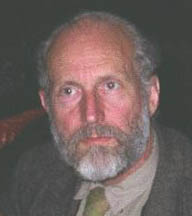Brandon Carter facts for kids
Quick facts for kids
Brandon Carter
|
|
|---|---|
 |
|
| Born | 1942 (age 82–83) Australia
|
| Alma mater | University of Cambridge |
| Known for | Anthropic principle Carter constant No-hair theorem Carter–Penrose diagrams Doomsday argument |
| Scientific career | |
| Fields | General relativity |
| Institutions | CNRS |
| Doctoral advisor | Dennis Sciama |
Brandon Carter (born in 1942) is an Australian scientist who studies how the universe works. He is especially interested in mysterious objects called black holes. He was the first to use and name the idea known as the anthropic principle. This principle helps us think about why the universe seems perfectly set up for life to exist. Today, he works as a researcher in France for the CNRS.
Contents
Discovering More About Black Holes
Brandon Carter studied at the University of Cambridge in England. His teacher was a famous scientist named Dennis William Sciama. Carter made important discoveries about black holes.
How Black Holes Are Described
Carter helped show that black holes are quite simple. They can be fully described by just three things:
- Their mass (how much "stuff" they contain).
- Their electric charge.
- How fast they spin.
This idea is known as the no-hair theorem. It means that once a star collapses into a black hole, it loses all its unique features. It's like saying a black hole doesn't have any "hair" or special details.
The "Fourth Constant of Motion"
While studying black holes, Carter found something special. He discovered an amazing "fourth constant of motion." This is a hidden rule that helps explain how things move around a spinning black hole. It was a big step in understanding these powerful objects.
When Stars Meet Black Holes
In 1982, Carter worked with another scientist, Jean-Pierre Luminet. They came up with the idea of a tidal disruption event (TDE). This happens when a star gets too close to a supermassive black hole.
They showed that the black hole's strong gravity can rip the star apart. This can cause the star to flatten out like a "stellar pancake." When this happens, the star's core can heat up and cause a burst of energy.
Neutron Stars and Their Shapes
More recently, Carter has also studied neutron stars. These are super dense stars, even smaller than black holes. He helped create a theory that explains how these stars can change their shape. This is important for understanding how neutron stars behave in space.

